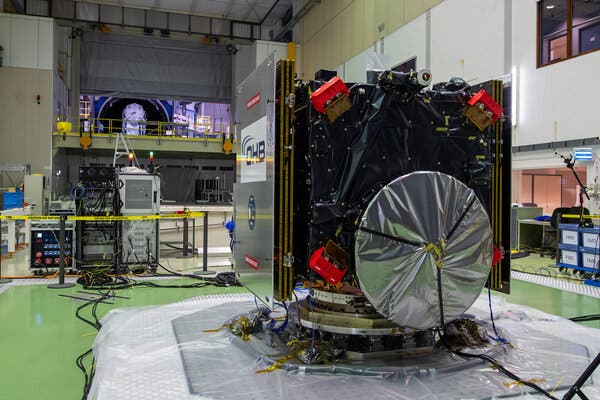The Hera spacecraft, expected to take flight Monday morning, is part of a broader effort to bolster humanity’s planetary defense readiness.
A European spacecraft is set to soar away from the coast of Florida on Monday, the start of a journey to visit an asteroid that an earlier NASA mission deliberately crashed into in 2022.
Hera, a car-size orbiter built by the European Space Agency, is the latest mission in a global effort to build a strategy for defending our planet from hazardous space rocks.
Here’s what to know about the Hera mission and its launch.
When will Hera launch and how can I watch?
Hera will launch as early as Oct. 7 at 10:52 a.m. Eastern time from Cape Canaveral, Fla., on a SpaceX Falcon 9 rocket. In case of weather-related delays, the launch window will remain open until Oct. 27.
Where is Hera going?
Hera is headed to an asteroid named Dimorphos, a 495-foot-wide object orbiting an even bigger rock named Didymos. About two years ago, NASA demonstrated for the first time that it was possible to alter the path of an asteroid with the Double Asteroid Redirection Test, or DART. The mission’s primary spacecraft slammed into Dimorphos at more than 14,000 miles per hour, sending a dusty cloud of debris and boulders thousands of miles into space.
Hera is going back to the scene to determine what the properties of Dimorphos are, how efficient the DART mission was and how to make deflecting killer asteroids a regular tool in humanity’s planetary defense arsenal.
